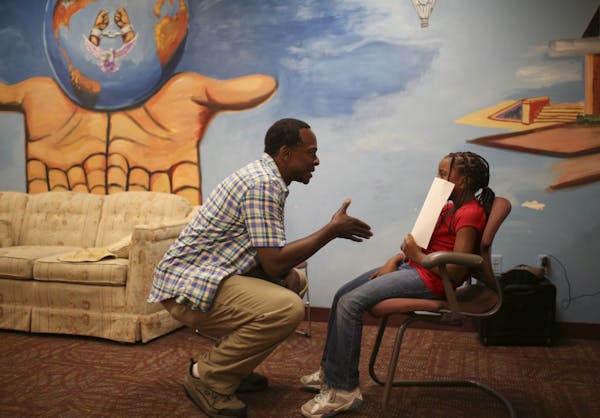It is commonly said among artists that they chose to work in the Twin Cities for the quality of life and the general health of the cultural community. It certainly isn't for the money.
"The majority of artists are not, quote, making a living from their art," said Vickie Benson, arts program director at the McKnight Foundation. "They are cobbling work together not so they can have opulent lives but so they can cover the basics."
Here is the good news for those who want to make a living in the arts: There are dozens of theater companies and lots of dance troupes; two full-time orchestras (assuming the current troubles work themselves out) and a part-time opera ensemble; art galleries large and small; choral groups like few other regions, and decent state, foundation and private funding for arts groups.
Here's the bad news: If you quit playing your instrument after college, you have little chance of making the orchestras; acting jobs rarely last for an entire year; the average dancer earns about $7,000 annually; visual artists live by what they can sell; full-time choral work is extremely rare, and grant money is highly competitive.
A 2005 survey by Minnesota Citizens for the Arts (MCA) found that full-time artists in the state earned an average of $44,204 annually. But only $34,342 came strictly from their art. In addition to the 4,722 full-time artists surveyed, another 11,805 defined as part-timers fared a bit better overall ($45,888) -- perhaps because they spent more time in better-paying day jobs.
Union musicians at the Minnesota Orchestra and St. Paul Chamber Orchestra are the best-paid artists as a group in the Twin Cities, aside from top-level administrators. Minimums under the expired Minnesota Orchestra contract were $115,000. The SPCO had minimums of $73,000. Combined, the two ensembles have roughly 125 players. Musicians as a general class, however, reported average income of about $39,000 in the MCA study.
Actors, as a class, earned about $31,000 from all sources, according to the study. Actors Equity union minimums are $882 a week at the Guthrie Theater, $650 at Chanhassen Dinner Theatres, $686 at Children's Theatre and roughly $550 at the many midsized theaters in the Twin Cities, but few, if any, actors work 52 weeks. Moreover, many actors are not in the union and cannot command that scale. Conversely, leading actors don't earn considerably more than the minimum.
"There's a lot more work here than in a lot of other cities," said Terry Lynn Carlson, who stitches together many gigs to put bread on the table. For 30 years, Carlson has averaged 26 weeks a year, thanks largely to his versatility. He directs and advises for high school productions, works with community groups, acts, stage-manages, designs and builds sets and last summer produced shows at the Paul Bunyan Playhouse in Bemidji, Minn.
"I also work as a project manager for a construction company," he said.
Ann Michels, currently playing the lead female role in "Bye Bye Birdie" at Chanhassen, has considered training as a massage therapist to augment her acting income. "I just haven't found the time to start training because thankfully I've had work," said Michels, who also sings with the George Maurer Jazz Group.
According to the MCA study, visual artists are the largest group in Minnesota, with 388 respondents. They reported an average income of $44,990, but only about $11,500 was from their art -- which indicates that more than any other group, these artists tend to be part-time.
McKnight's Benson, who is working to quantify largely anecdotal evidence, still feels that artists in the Twin Cities have a better chance to support themselves in their work than artists elsewhere do. McKnight gives out 38 fellowships a year, worth $25,000 each. The Jerome Foundation distributes grants to institutions and some individual artists. Grants from the State Arts Board go up to $10,000 a year for an individual.
Graydon Royce • 612-673-7299

Minnesota Sports Hall of Fame: A class-by-class list of all members

This retired journalist changed professional wrestling from Mankato

